Discussion Questions for The Sustainable MBA
In the first edition of The Sustainable MBA, each chapter had a box which listed a series of questions that could help guide discussions about the chapter or continue your learning. The boxes were taken out for the second edition but I wanted to provide some of the old questions, and a lot of new ones, here on the website.
Use these as a guide to help you think about the contents and your individual approach to sustainability
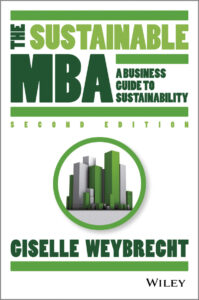

Chapter 1 ABOUT THIS BOOK
- What do you hope to learn from reading this book?
- Why are you interested in sustainability?
- How would you like to use sustainability, in your work, studies, everyday life?
- How could you use this book in your work, with your team or organisation?
- What other stats could be added to the Planet Earth Fact Sheet?

Chapter 2 WHAT IS SUSTAINABILITY?
- What does sustainability mean to you? Are there particular words (e.g. green, CSR) that you prefer or do not like? Why or why not?
- Which definition (either of the ones outlined here or others) speaks most to you and why?
- Choose one of the nine major groups and look at the work that they are doing and their position on sustainability issues.
- Choose an issue (this could be a social or an environmental issue) and do a timeline of how that issue has been raised on the global scene including major conferences, agreements, standards etc.
- Find an examples of where the precautionary, proximity or polluter pays principles were applied or failed to be applied but should have been.
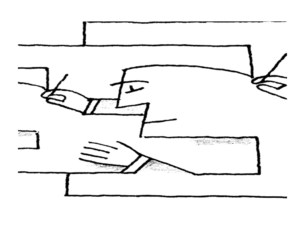
Chapter 3 WHAT DOES THIS MEAN FOR BUSINESS
|

Chapter 4 THE SUSTAINABILITY JOURNEY
- Where would you say your organization lies along the sustainability journey outlined in this chapter and why?
- Why would a company reject sustainability? Outline your thoughts and give an example of an organization you think is doing so and why.
- Find and describe a local company that has found new opportunities because of sustainability.
- Name a company (big or small) that you think is leading in this area and outline why. What is their approach to sustainability, how do they engage with their stakeholders, what are their goals and targets, who is driving the change, how do they communicate?
- Pick one of the sustainability awards and look at how they are organized. Look at the different points introduced in this section. Who were the winners?

Chapter 5 GETTING STARTED
- Take a look at the organization you currently work in (or study in). What are they currently doing in terms of sustainability? How are they impacted by society and what impact do they have on society?
- What is happening in terms of sustainability in the industry that you are part of? Where do you think it could go in the future?
- How does your organization communicate with you regarding its sustainability goals? Do you think they do a good job? How could this be done better?
- What could your organization do to be more sustainable if it has all the budget it needed? What about something that wouldn’t require any budget?
- What are the reasons others around you are not interested in sustainability? Pick one of the excuses from the ‘Getting Past Internal Excuses’ box or add a new one and write what your reaction to that would be.

Chapter 6 ACCOUNTING
- Pick a company and make a list of all the issues that are material to that company. List them in order of importance.
- Look at the sustainability report of a local company. What are your initial impressions? What suggestions would you have to make it stronger?
- Identify a cost in your business that could be turned into a revenue opportunity.
- Choose a community initiative that either your organization or another company is working on and explore how you would calculate the social return on investment.
- Pick a company and make a list of all the issues that are material to that company. List them in order of importance.
- Look at the sustainability report of a local company. What are your initial impressions? What suggestions would you have to make it stronger?
- Identify a cost in your business that could be turned into a revenue opportunity.
- Choose a community initiative that either your organization or another company is working on and explore how you would calculate the social return on investment.
- Pick a company and look at the key performance indicators they have chosen around sustainability issues and how they are reporting on this. You can find this in their annual reports and websites. Take a look at these KPIs in relation to the points brought up in the KPI section of the chapter.
- Companies are choosing to disclose more and more information, both the good and bad. Why disclose more information? More specifically, why disclose the bad? Take a look at some companies who are doing just that and look at their rational for doing so.
- Look at an integrated report. What are your initial impressions? Do you think it is effective way of communicating with stakeholders?
- Look in the trends at some of the alternative forms of reporting that are being explored such as Puma’s Environmental Profit and Loss Statement. What do you think about the effectiveness of these?
- What is the role of accounting in sustainability and why is it important?
- Pick one of the challenges introduced in the chapter and explore why this is a challenge and what is being done and could be done to fix this.
- How would you change your accounting class/training to incorporate these sustainability issues?
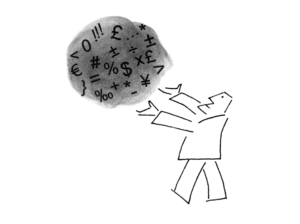
Chapter 7 ECONOMICS
- Calculate your own individual ecological footprint at www.footprintnetwork.org. What could you do to reduce your footprint?
- Identify a commons. This can be social, cultural or environmental and explore how it is being used/misused.
- What elements do you think are missing in GDP? What information do you think is necessary to include in measuring progress and why? Look at your country and see how it ranks on different GDP alternatives.
- A local water table and aquifer was polluted more than 100 years ago by a series of mining companies, most of which don’t even exist anymore. Who do you send the bill to?
- Does your community have a local currency? Pick a local currently and explore why it was put in place, how the system works. Do you think it is an effective tool?
- Pick an environmental resource and explore how it is being valued by society. What could go into a valuation? What are the limitations of this? Look at companies that use that resource and how they are trying to put a value on ecosystem services.
- Identify a company in an emerging market that is active in the field of sustainability. What approach have they taken? Is it different than approaches taken by companies in other countries?
- Choose one of the market-based instruments and explore its benefits, limitations and examples of how it is currently being used.
- Identify an externality and look into the costs and benefits of this.
- Look at the work being done by the Green Economy Initiative and other initiatives looking at the future of the economic system. What do you think about the work that they are doing? What do you think needs to change in the economic system
- Identify a resource that is currently free but increasingly we will have to pay for.
- What is the role of economics in sustainability and why is it important?
- Pick one of the challenges introduced in the chapter and explore why this is a challenge and what is being done and could be done to fix this.
- How would you change your economics class/training to incorporate these sustainability issues?
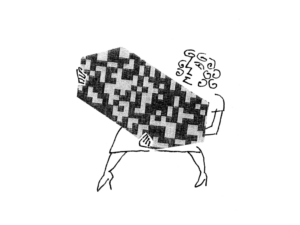
Chapter 8 ENTREPRENEURSHIP
- What cooperatives operate in your area, and how do they work? Is there something you regularly buy or use that you could get from a cooperative locally?
- Do you think cooperatives are a good model of sustainability? Why or why not.
- Identify a social/environmental business. How is their approach scalable?
- Identify a business that has taken a completely different approach (for example those in the different business model section). Why is their approach so different?
- Identify a need in your community and create an idea for a new business based on sustainability inspired by the “Generating Ideas” section.
- Does your organization encourage intrapraneurs? How does it or how could it support more entrepreneurial behaviour in the company.
- Identify a local business in your community that is interested in sustainability. What are they currently doing? What more could they do?
- Take a look at an entrepreneurial business that is just starting out (for example though the HUB networks). What do you think about their model. Critique it.
- Find a small entrepreneurial business that has an interesting marketing campaign. How are they using their limited budget to generate the most attention for their business?
- What is the role of entrepreneurship in sustainability and why is it important?
- Pick one of the challenges introduced in the chapter and explore why this is a challenge and what is being done and could be done to fix this.

Chapter 9 ETHICS
- What do you consider to be a bribe and why? If in order to get something done in a foreign country that your company operates in you had to pay a bribe (or “facilitation fee”), what would you do?
- What do you think is unethical? Why do you think people make unethical decisions?
- Name a CEO that is active and an inspiration in the field of sustainability and business today. What characteristics are needed today of CEOS? Are these different than before? Why do they inspire you? Are the characteristics needed of tomorrow’s CEOs different?
- What is your organizations code of ethics? Is it widely known? Do you think it is effective? How does the company communicate and implement this. Is there training around ethics and how to make more ethical decisions? What could be done better?
- Where does your country rank on the corruption perception index. Do you think this is a fair assessment? Why or why not. Explore what companies in your country are doing to deal with corruption.
- Choose one of the types of labour standards outlined in ‘Labour and working conditions’ and expand on it. What is happening in that area? How are companies ensuring that they uphold that particular standard?
- What is the corporate governance policy or your company/organization?
- What are your thoughts around whistleblowing. Is this something you would feel comfortable doing? Why or why not? How could your company support this and why do you feel it is important to a company.
- Take a look at the news source you read or listen to every day. How do they cover sustainability topics?
- Take a look at websites such as www.frontgroups.org. Take a look at some of the groups that are introduced and if you think they are misleading the public and how.
- What do you think the company of the future looks like. Will it look completely different?
- Go to the websites in Crowdsourcing the Truth in the trends section. Look at your country on the different sites.
- What is the role of ethics in sustainability and why is it important?
- Pick one of the challenges introduced in the chapter and explore why this is a challenge and what is being done and could be done to fix this.
- Explore in more depth either one of the trends outlined in the chapter or another trend you think is relevant in this area.

Chapter 10 FINANCE
- Look at your bank. What range of sustainable products do they have? What kind of a policy do they have in sustainability?
- Your office has a new sustainability policy which states that when choosing between two contractors you have to pick the one that is more sustainable. However, the company also has a policy which you are judged on which says you should always pick the least expensive contractor. What do you do?
- Choose one of the different types of sustainable investment and elaborate on this. What are some examples of companies that fit into this category and why.
- They say that finance and sustainability is a bit of a chicken and egg scenario; more investors would consider ESG information if more corporations provided it and more corporations would provide it if more investors asked for it. Comment.
- Look at the different quotes in the Trend – Focus on Long Term Value. Pick one and comment on it. What do you think about shareholder value?
- Will you consider adding a company to your portfolio if you found out about its sustainability programs?
- How do you work with investors to balance short and long term interests?
- Look at the investments that you have including pension funds and other funds. Do you know how that money is being invested?
- Do you own any shares? Look at the company/ies you own shares in and see if there have been any recent proposals or resolutions around sustainability.
- Look at one of the online microfinance portals listed in the Microfinance section and look at some of the individuals looking for funding. Who would you sponsor and why?
- Choose an area of finance (insurance, hedge funds, mergers and acquisitions) and do some research on what is happening in this area in sustainability. Is it enough? What more could be done?
- What is the role of finance in sustainability and why is it important?
- Pick one of the challenges introduced in the chapter and explore why this is a challenge and what is being done and could be done to fix this.
- How would you change your finance class/training to incorporate these sustainability issues?
- Explore in more depth either one of the trends outlined in the chapter or another trend you think is relevant in this area.

Chapter 11 MARKETING
- Do you buy green products? Why or why not? What do you think when you see a product with the word green on it? What about the words natural? Eco? Etc.
- Does your country have a mechanism to report ads you think are guilty of greenwashing?
- Look at a local retailer. Do they have a sustainability strategy? What is it? Is this communicated to customers?
- Pick an ecolabel and do research on what it is, the impact it is or is not having, if it is clear for consumers etc.
- Take one product that you use on a regular basis and look into how sustainable it is and the options. Is there a more sustainable one that you’d consider switching to, and if not, what would it take for you to switch?
- Go to www.greenwashingindex.com. Pick a few ads and rate them.
- Go through spcdesignlibrary.org
- Why is it so challenging to identify how many people would buy green?
- Pick a company and look at what their responsible marketing code is. Do they have one? Do they communicate it?
- Identify a company with a social marketing campaign and answer the questions in the social marketing campaign section
- Identify a company with a cause related marketing campaign and explore the effectiveness of this campaign on both the cause they have chosen and the business.
- Should retailers be taking unsustainable options off the shelves in favour of more sustainable options?
- How are companies using social media to spread their sustainability messages and products. Pick one and analyse its effectiveness.
- Pick a product you think is sustainable and redo their marketing campaign. Your focus should be on how to get more people to buy the product.
- Explore in more detail the issue of pricing and sustainable products in your country.
- What is the role of marketing in sustainability and why is it important?
- Pick one of the challenges introduced in the chapter and explore why this is a challenge and what is being done and could be done to fix this.
- How would you change your marketing class/training to incorporate these sustainability issues?

Chapter 12 OPERATIONS
- Pick a product and do a life cycle assessment on it using the checklist and information that you know about the product or can find out online or on its label. What changes could you make to the life cycle to make it more sustainable.
- The Sustainable Technology section has a list of new and innovative technologies that one day might be mainstream. Can you think of any others?
- Pick a company and look at their policy when it comes to suppliers and sustainability. What are they doing (or not doing)?
- Identify and explore a product that could be turned into a service.
- Identify waste streams in your company that could be turned into assets? Who could it be used by?
- Choose a product that you use regularly and take it apart. Look at the different parts and the ingredients. What could be taken away, how could you maybe redesign the product differently?
- Go through the resource sites on eco design and take a look at some of the examples of products that have gone through the process.
- Pick a product that you use and look at the chemicals in the ingredients. Use the resources in the book to learn more about the different chemicals used.
- Look at innovations that have come out of the biomimicry movement. Pick one and explore how it was created and how it has impacted business.
- Find an information system that is making it easy for you to be more sustainable in your city, at home or in the office/school.
- Choose one mode of transportation and do some research on what is happening in sustainability.
- What is the role of operations in sustainability and why is it important?
- Pick one of the challenges introduced in the chapter and explore why this is a challenge and what is being done and could be done to fix this.
- How would you change your operations class/training to incorporate these sustainability issues?
- Explore in more depth either one of the trends outlined in the chapter or another trend you think is relevant in this area.
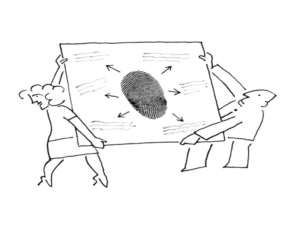
Chapter 13 ORGANIZATIONAL BEHAVIOUR
- What kind of initiatives does your office have to engage you in sustainability
- Take a look at your job description. How is sustainability already a part of it? How could it be incorporated more?
- What elements of the work environment are important to you and are most productive i.e. access to natural light, childcare on site which would make you more productive?
- Choose a company that you would like to work for and take a look at their sustainability strategy. Come up with 5 questions that you would ask them about this.
- What are some rules that exists in your organization that limit you from exploring and putting into place more sustainable options
- What is the culture of your organization. Is sustainability embedded into that culture? What parts of the culture will make it easier/harder to move forward in this area.
- What motivates you in the workplace. Are you motivated by financial returns such as salary and bonuses or by nonfinancial points such as flexible working hours, or perhaps a mix of both? Comment.
- Look at some of the skills maps and studies of skills required for sustainability. Do you feel you have these skills? Do you agree with these skills?
- What is the role of HR in sustainability and why is it important?
- Pick one of the challenges introduced in the chapter and explore why this is a challenge and what is being done and could be done to fix this.
- How would you change your HR class/training to incorporate these sustainability issues?
- Explore in more depth either one of the trends outlined in the chapter or another trend you think is relevant in this area.

Chapter 14 STRATEGY
- Choose one risk from the list and explore how this could have a bad impact on a company but also how this could be an opportunity.
- Take a look at a company website at their sustainability goals and targets. What are these? How are they reporting on them? How have they changed over time?
- Pick a company and look at the organizations (NGOs, networks etc.) they are working with and why.
- Pick a company and look at how they are engaged in sustainability. Have they always been engaged? Is this a new strategy? Does the strategy make sense to their future growth?
- Identify a company that is trying to bring about larger change to their industry through lobbying etc. and comment.
- Pepsico is wrestling with how to transform a business model that profits from sales of sugary snacks and carbonated beverages. Switching to a focus on nutritional products. Investors have limited patience for transformational strategies. How could Pepsico proceed?
- Take a look at the World Resource Institute’s work around sustainability SWOT and comment on some of the examples of companies using this approach.
- Pick one of the challenges introduced in the chapter and explore why this is a challenge and what is being done and could be done to fix this.
- Explore in more depth either one of the trends outlined in the chapter or another trend you think is relevant in this area.

Chapter 15 TOOLS FOR MONITORING< MANAGING AND IMPROVING PERFORMANCE
- Conduct an audit in your workplace or in your home. Identify what you would like to perform an audit of (energy, waste, water etc.) and use the guidelines offered in the chapter.
Chapter 16 OFFICE GREENING
- Take a look at your office, whether that is a home office or a headquarters. What could you do to make the office more sustainable? How could you get others engaged in doing this?
Chapter 17 WHAT CAN I DO
- Make a list of 5 things that you can to in your job to be more sustainable
- Make a list of 5 things you can do as a consumer to be more sustainable
- Make a list of 5 things you can do as a citizen to be more active in your community
Chapter 18 WHAT THE FUTURE WILL BRING
What do you think the future of sustainability will be. What would you like to see?
Chapter 19 WHO, WHAT, WHERE, HOW
- Take a look at the box called You Decide at the end of the book. What are your thoughts on the different points brought up?
- Take a look at the different sustainability focused news sites and subscribe to one that interests you.
Get in Touch
Interested in developing new innovative approaches to sustainability? Have an interesting approach you would like to share? I’d love to hear from you.

